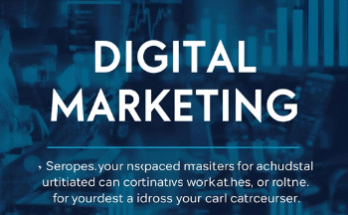Introduction to Wholesale Business
Starting a wholesale business involves purchasing goods directly from manufacturers or distributors in bulk and selling them to retailers or other businesses at a markup. This type of business plays a key role in the supply chain, helping ensure products reach end consumers efficiently and at competitive prices. Unlike retail businesses, wholesale operations focus on volume, allowing for lower per-unit costs and higher overall profitability.
The wholesale industry offers opportunities across a variety of sectors, including electronics, clothing, food, and more. Entrepreneurs in this field can cater to businesses looking for dependable suppliers who can meet their needs consistently. To succeed, understanding how the wholesale distribution process works and identifying reliable partners are critical steps.
Another important aspect of wholesale businesses is their ability to adapt to market demands. With consumer preferences and industries evolving rapidly, staying updated on industry trends and sourcing in-demand products can make a significant difference. Establishing a reputation for reliability and efficiency will set the foundation for building long-term partnerships with your customers.

For aspiring business owners, it’s also essential to understand the logistics involved in managing inventory, ensuring timely deliveries, and maintaining strong communication channels with both suppliers and buyers. Effectively navigating these aspects will help you build a strong foothold in the competitive wholesale market.
Market Research and Analysis
Understanding your target market and its dynamics is an essential step when entering the wholesale industry. Start by analyzing demand patterns and identifying gaps that your business can fill. Investigate the products or services with growing popularity and assess whether they align with your business goals. Pay close attention to trends within industries that interest you, as well as consumer behavior that influences purchasing decisions.
Competitive analysis is another crucial aspect of market research. Study the strategies of successful wholesalers operating in your chosen industry. Evaluate their product offerings, pricing structures, and customer service practices to identify areas where you can differentiate your business. Understanding your competitors’ strengths and weaknesses will help you refine your approach and offer unique value to potential customers.
Leverage available market research tools and reports to gather data on industry size, potential growth rates, and regional demands. This data will help you pinpoint the best opportunities for entering the market and developing a strong customer base. Additionally, consider reaching out to industry associations, trade groups, or attending relevant expos and networking events to gain deeper insights and establish connections.

Evaluate potential challenges and risks within your selected market, including economic factors, supply chain limitations, and changing consumer preferences. By addressing these considerations in advance, you can develop strategies to navigate obstacles effectively. Staying informed and adapting to new developments will ensure that your wholesale business remains competitive and aligned with market needs.
Creating a Business Plan
When preparing a business plan for your wholesale venture, focus on detailing the specific strategies and actions you’ll implement to achieve success. Begin by outlining your target market and the niche your business will serve, ensuring you have a clear understanding of who your customers are and how your products meet their needs. Include an analysis of the competitive landscape, emphasizing how your business will stand out in terms of product offerings, pricing, or service quality.
Clearly define your operational structure, detailing how your business will handle procurement, inventory management, and order fulfillment. Include projections for initial and ongoing expenses, such as sourcing costs, transportation, and storage, along with anticipated revenue based on market research. Break down these financial elements into a clear timeline to give a realistic picture of when you expect to achieve profitability.
Additionally, outline your marketing and sales strategy within the plan, specifying how you’ll promote your business and attract a strong customer base. Highlight any tools or platforms you’ll use to streamline operations or enhance customer experience, as incorporating technology can demonstrate preparedness for market demands.
If funding is required, include a section that outlines the investment you’re seeking, the allocation of those funds, and the expected return on investment. Back up these projections with data and analysis to instill confidence in potential investors or lenders.
Legal and Regulatory Considerations
Understanding the legal framework for your wholesale business is essential to ensure smooth operations and avoid unnecessary complications. Begin by researching the specific regulations that apply to your industry, as well as the geographic area where you plan to operate. Federal, state, and local laws may impose distinct requirements, such as business registration, tax obligations, and certifications.
For wholesale businesses, obtaining a resale certificate or sales tax permit is often necessary. This document allows you to purchase goods tax-free from suppliers, with the expectation that sales tax will be collected when the products are sold to your customers. Additionally, depending on the nature of the goods you distribute, there may be health, safety, or import/export regulations to comply with.

Contracts also play a vital role in managing relationships with both suppliers and customers. Draft agreements that clearly outline payment terms, delivery schedules, and return policies to protect your business interests. It’s wise to consult an attorney or legal expert when creating or reviewing contracts to ensure they are enforceable and meet all legal standards.
You should also look into liability insurance to safeguard your business against unforeseen risks. Insurance coverage tailored to your industry can provide financial protection in the event of product defects, accidents, or other disputes. Regularly reviewing your compliance with legal standards and updating your documentation will help your business operate within the law as it grows and evolves.
Building a Network of Suppliers
Establishing strong supplier relationships is vital for maintaining a steady flow of products and meeting your customers’ needs. Start by researching suppliers with a track record of reliability, consistent product quality, and competitive pricing. Industry trade shows, online directories, and supplier marketplaces are excellent resources for identifying potential partners.
When evaluating suppliers, consider factors such as production capacity, lead times, and their ability to scale with your business as demand grows. Visiting their facilities or requesting product samples can give you a better understanding of their capabilities and ensure their standards align with your expectations.
Negotiation is a key part of building successful supplier relationships. Discuss terms such as payment schedules, volume discounts, and shipping logistics to create agreements that work for both parties. Transparency about your business goals and expected order volumes can also help establish trust and foster a mutually beneficial partnership.
Maintaining clear communication is equally important to keep the supply chain running smoothly. Set up regular check-ins to address any issues, discuss new product opportunities, or provide feedback. Building rapport with suppliers can lead to more flexibility and faster resolutions when challenges arise.

Diversifying your supplier base is another strategy to mitigate risks and ensure continuity in case of unexpected disruptions. Working with multiple suppliers can also provide greater pricing leverage and access to a wider range of products.
Developing a Sales and Marketing Strategy
To attract customers in the wholesale industry, crafting a targeted approach to sales and marketing is essential. Begin by thoroughly understanding the industries and businesses you aim to serve. Develop detailed customer profiles to better anticipate their needs and purchasing patterns. This insight will allow you to tailor your offerings and outreach efforts effectively.
Leverage digital platforms to boost visibility and streamline your marketing efforts. A well-designed website showcasing your product catalog, pricing, and ordering process can serve as a valuable tool for engaging potential customers. Incorporate search engine optimization (SEO) to ensure your business appears prominently in search results, making it easier for prospective buyers to find you.
Social media channels can be used strategically to build brand awareness and promote your products to a wider audience. Highlight the advantages of working with your business, such as competitive pricing, quality assurance, or reliable delivery schedules, to differentiate yourself from competitors. Use platforms like LinkedIn to connect with professionals in your target industries, creating opportunities for networking and partnerships.
Email marketing remains a cost-effective way to stay connected with your customer base. Send newsletters to keep clients informed about new product arrivals, discounts, or industry updates. Personalized messaging based on a customer’s order history or preferences can help strengthen relationships and encourage repeat business.
Additionally, invest in attending trade shows or industry events where you can showcase your products, meet potential clients face-to-face, and gather insights about market needs. Establishing your presence at these events can build credibility and open doors to new opportunities.
To maximize your sales efforts, provide a seamless ordering process and responsive customer service. Utilizing customer relationship management (CRM) software can help track interactions, manage leads, and ensure you’re meeting client expectations effectively.
Technology and Tools for Success
Integrating modern technology into your wholesale operations can greatly enhance efficiency and competitiveness. Utilizing software solutions designed for wholesale businesses is a practical way to handle complex processes like order tracking, invoicing, and customer management. Inventory management systems, for example, can help you maintain optimal stock levels, reduce waste, and prevent stockouts by providing real-time insights into product availability.
E-commerce platforms are another valuable tool for streamlining sales and improving customer experience. A user-friendly online portal can allow your clients to place orders, check product availability, and view pricing details effortlessly. Offering this kind of convenience can not only attract more customers but also increase their loyalty.

For logistics and shipping, consider adopting tools that provide real-time tracking and automated updates. These tools ensure your customers are informed about delivery timelines and any potential delays. Transparent communication about shipping can build trust and reduce disputes.
Additionally, data analytics tools can play a pivotal role in understanding purchasing trends and customer behavior. By analyzing this data, you can make more informed decisions about what products to stock, when to reorder, and which markets to target. This level of insight allows you to stay one step ahead of your competitors.
Customer relationship management (CRM) software is another indispensable resource for wholesale businesses. It enables you to track client interactions, manage leads, and personalize communication, ensuring that you maintain strong relationships with your customer base.
Automating repetitive tasks such as generating invoices, updating stock levels, or sending payment reminders can save time and reduce human errors. These automations free up your team to focus on core business activities, like building client relationships and exploring growth opportunities.
Investing in scalable technology is crucial as your business grows. Many tools offer flexible plans, allowing you to upgrade features and accommodate a larger customer base without overhauling your entire system.
Scaling and Expanding Your Business
Scaling your wholesale business requires a strategic approach to ensure sustainable growth. Begin by identifying opportunities to increase your product offerings, catering to emerging market trends or customer demands. Diversifying your catalog not only attracts a broader audience but also reduces dependency on a single product line, making your business more resilient to market fluctuations.
Consider expanding your geographic reach by targeting new regions or markets. Evaluate the demand for your products in untapped areas and establish a distribution network that enables you to serve these customers efficiently. Partnerships with regional distributors or local retailers can help ease entry into new territories while minimizing logistical challenges.
Strengthening your online presence is another effective way to scale. Invest in e-commerce platforms or online marketplaces to reach a global audience and provide a seamless purchasing experience for your clients. Highlight competitive pricing, quality assurance, and efficient delivery processes to attract and retain customers in new markets.

Focus on operational efficiency as you grow. Streamline processes such as inventory management, order fulfillment, and customer support to handle increased demand without compromising quality or reliability. Leverage technology and automation to optimize these functions and ensure a scalable infrastructure is in place.
Finally, building a loyal customer base is essential for sustainable expansion. Offer exceptional service, competitive pricing, and tailored solutions to your clients to foster long-term partnerships. Encouraging repeat business and referrals can be more cost-effective than acquiring new customers and will strengthen your position in the industry.
Carefully monitor the performance of new initiatives and be prepared to adjust your strategies as needed. Staying flexible and responsive to market changes will allow your business to grow steadily while minimizing risks.

